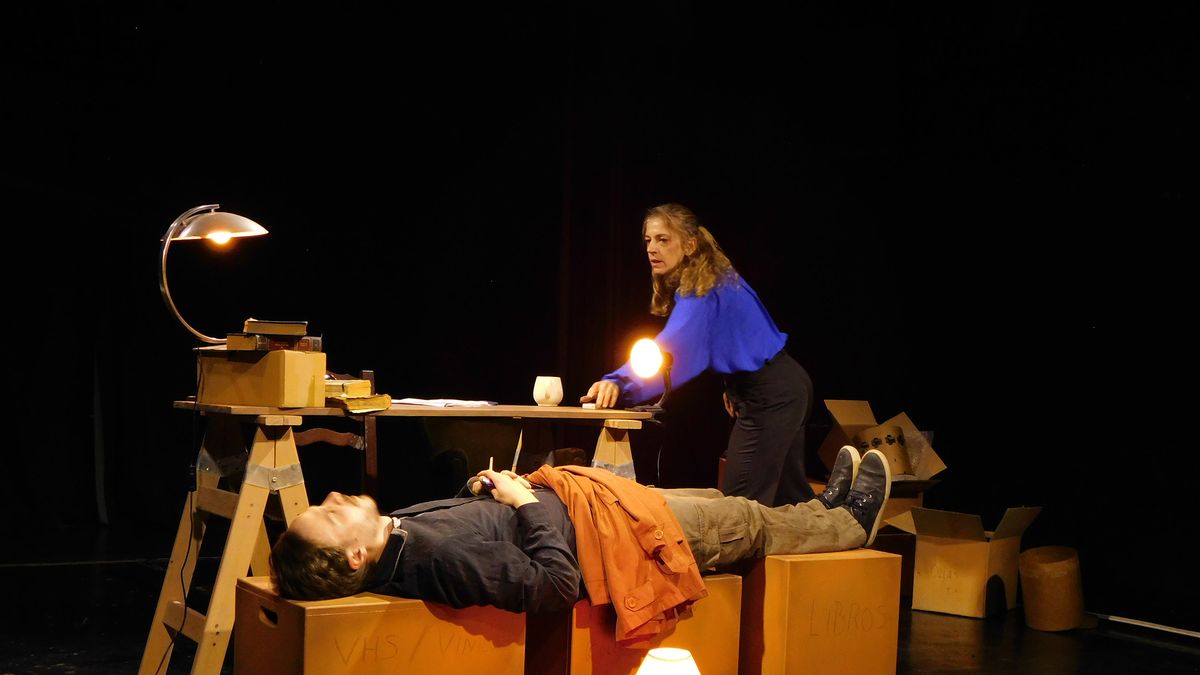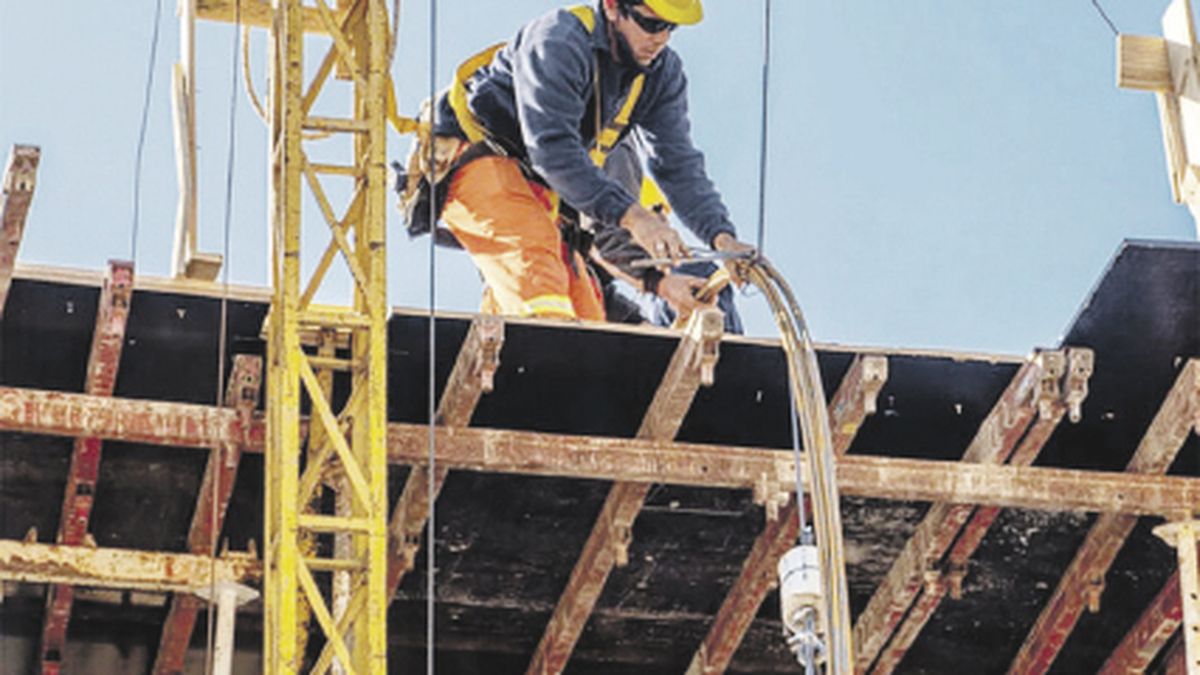“Theatre continues to be a party: a place of meeting, of love, of resistance, of power, of bodies. In a context where everything pushes towards isolation and speed, individualism, meritocracy, theater proposes the opposite: stop, look at the other, build something in common. There is an other and that, today, is deeply subversive,” says Alejandra Endler, author and director of “What to do with all these things.”
The work features performances by Lisa Caligaris and Martín Elías Costa and can be seen on Wednesdays at 9 p.m. on El Grito. It explores family ties, material remains and inherited versions that are intertwined in a living montage space, where the viewer occupies the place of the camera and witnesses an attempt to narrate itself from the rubble. We talk with Endler.
Journalist: How did the germ of the story appear with a woman who decides to film the documentary about her life?
Alejandra Endler: The idea for the project was born when I read Barbara Loden, by Nathalie Léger. I was interested in that mix of biography, story and fiction, that way of telling another woman to actually talk about oneself. And that figure of Wanda, a woman who seems lost, but who in her drift also finds a way to say “no.” Not to the role they gave him, not to what is expected. That resonated with me a lot. Then I read Letter to Mom again by Hebe Uhart. That letter, so simple and so tremendous, where a woman asks her dead mother to keep her memories, because she has enough with her own. There are memories, memories, that we do not want to continue carrying, many things that we have in some way are not ours.
AE: At a cinematographic level, the project dialogues with the work of Agustina Comedi in The Silence of the Falling Bodies, where family memory becomes a device for political and affective exploration, and with the gaze of Agnès Varda, especially in The Gleaners and the Gleaner, where collage, the archive and montage are transformed into forms of thought. These references guide an aesthetic and narrative search that combines the documentary, the autobiographical and the fictional as ways of investigating intimate and collective experience.
Q: How does it connect with biodrama?
AE: Questions appear to me: a work always has something of one, but at the same time when crossing the fictional space, is it still something personal? Is there something that speaks beyond one? The work reflects on biodrama, it does not finish closing. And I began to wonder: Who am I with all that they told me? Is what I know about myself mine or was it told to me? We always hear the same ones speaking because we don’t hear other voices. And what happens with the objects, with those things that we keep without knowing why, as if in them there was a part of us that we don’t want to lose? From the confluence between these readings and references, the figure of the protagonist emerges: a woman who grew up under the shadow of an encompassing mother and a brother who transformed the family history into a matter of success. An absent father and a mother conditioned by a society of “what will they say” complete an emotional landscape crossed by the weight of the mandate, guilt and the attempt to repair.
Q.: The project also proposes an exploration of memory and family stories.
AE: Yes, they are like spaces where discourses about what should be are accumulated and stressed, especially around the figure of women in the domestic and social sphere. Through objects, material memories and layers of story, the work investigates how family ties, inheritances and narratives are organized – and sometimes suffocated. The piece is conceived as a scenic space of review and reconstruction, where everyday gestures and fragments of the past dialogue with the ways in which a woman tries to find her place within the history she inherited. That’s where this work comes from. Of that mix between memory, identity and fiction. And the need—I think—to look at all that again, but with one’s own voice.
Q: ¿How do those memories arise that become meaningful from the objects on stage?
AE: The memories that appear in the work are not only of the character, but of many Argentine families. There is something we inherited that we no longer want to carry. I was interested in thinking about that tension: what a generation wanted to bequeath us and what today we feel we need to leave behind. At the same time, there are aspects—such as analogue, manual, artisanal—that are worth supporting. The work reflects on that: what to take care of and what to let go. In this difficult moment, where we believed that certain mandates no longer existed and yet they return, looking at the objects is also looking at our cultural history. And especially thinking that the protagonist is a woman.
Q: In what sense does time become unstable and fiction become confused with reality?
AE: Time in the work functions as a soft matter. There is no before or after, but a series of layers that mix: what happened, what is remembered and what is invented. Time is not an arrow, that destroys, precise, normative. But a bag, where one thing that is combined with another takes on a new meaning. It is the time of things, of memories. Laura tries to narrate herself, but every time she does, something changes. Fiction appears as a way to sustain what memory cannot fix. The real and the imagined are confused because, deep down, all reconstruction is a form of fiction.
The play ends talking about loss and identity, how do they resonate in your story? Calderón would say that life is a dream and dreams are dreams. On the other hand, I think it is a good time to ask ourselves if fiction surpasses reality.
Q: The play ends talking about loss and identity, how do they resonate in your story?
AE: The work speaks of loss, but not only in an individual sense. It talks about what is lost when a generation leaves, when certain ways of looking, caring or transmitting disappear. Also of the necessary losses: letting go of mandates, roles, inheritances that no longer represent us. In this process the question of identity appears, not as something fixed, but as something that is reconstructed all the time. I always wonder who I am, and I think that’s also part of our collective history. That “who I am” is rewritten, mutates, sometimes it becomes more confusing and, at the same time, more forceful. Perhaps that is the heart of the work: accepting that identity is not defined, it is rehearsed and constructed. And that every loss can also be a new way of being.
Q: How do you see theater and culture?
AE: Today I see the cultural panorama as difficult. It is a dark time for culture, crossed by uncertainty and lack of support. Although, thinking about it, darkness also has its own thing: things happen in it. At the same time, fits of hope grip me. I think that it is not that “people moved out of town,” but that the movements that emerged in our generation were so powerful that they needed to try to extinguish them. As in other times: whenever something arises with strength and desire, they want to keep it quiet. It makes noise. Our history is full of that. I think we are all a little lost, trying to figure out how to move forward, but also more aware of what we want to take care of.
Source: Ambito
I am an author and journalist who has worked in the entertainment industry for over a decade. I currently work as a news editor at a major news website, and my focus is on covering the latest trends in entertainment. I also write occasional pieces for other outlets, and have authored two books about the entertainment industry.




